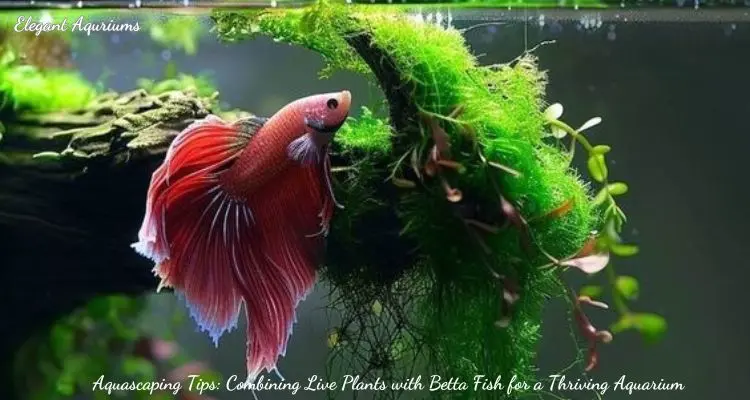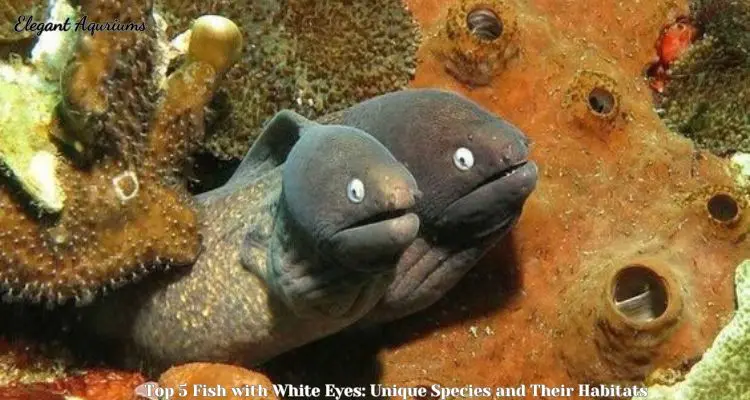Fish care
Black Molly Fish Pregnant: How to Spot the Signs and Prepare
Black molly fish pregnant is an exciting and important phase for any aquarium hobbyist. With their sleek, dark bodies and lively personalities, black molly fish are a popular choice for freshwater aquariums. These hardy fish are relatively easy to care for, making them ideal for both novice and experienced aquarists. However, recognizing when a black molly fish is pregnant and knowing how to prepare for the arrival of fry (baby fish) can be a bit daunting for new fish owners. This guide, Elegant Aquriums will help you spot the signs of a pregnant black molly fish and offer tips on how to ensure a safe and healthy environment for the mother and her fry.
Understanding Black Molly Fish Breeding
Before diving into the signs of pregnancy, it’s essential to understand how black molly fish breed. Black mollies are livebearers, meaning they give birth to live young rather than laying eggs. This characteristic is shared with other popular aquarium fish such as guppies, platies, and swordtails. In the wild, black mollies inhabit brackish waters, but they can also thrive in freshwater aquariums.
Breeding black mollies in a home aquarium is relatively straightforward, as they tend to reproduce readily if the conditions are right. However, it’s important to provide an environment that encourages healthy breeding and supports the well-being of both the adult fish and their offspring.
Spotting the Signs of a Black Molly Fish Pregnant

Identifying a pregnant black molly fish can be challenging if you don’t know what to look for. Here are the key signs that your a Black Molly Fish Pregnant:
1. Swollen Abdomen
The most noticeable sign of a pregnant black molly fish is a swollen abdomen. As the pregnancy progresses, the female’s belly will gradually enlarge as the fry develop inside. This swelling is generally most evident when viewing the fish from the side. If your black molly’s belly appears rounder and larger than usual, it’s a strong indication that she may be pregnant.
2. Gravid Spot
Another telltale sign of pregnancy in livebearers is the presence of a gravid spot. The gravid spot is a dark, triangular area located near the anal fin of the female fish. As the fry develop, this spot becomes more prominent, darkening in color as the babies grow. Observing the gravid spot closely can give you a good indication of how far along the pregnancy is.
3. Behavioral Changes
Pregnant black molly fish often exhibit behavioral changes. You might notice your fish becoming more reclusive, spending more time hiding among plants or decorations in the tank. This behavior is natural as the female seeks out a safe and quiet place to give birth. Additionally, pregnant mollies might become less active or eat less than usual, especially as they near the end of their pregnancy.
4. Changes in Appetite
While some pregnant mollies may eat less, others might experience an increased appetite during the early stages of pregnancy. Providing a balanced diet rich in nutrients is crucial during this time to support both the mother and the developing fry.
5. Rounded Shape
As the pregnancy advances, the fish’s body may take on a more rounded shape, particularly around the belly area. This rounded appearance is a clear visual cue that the molly is carrying fry.
Preparing for the Birth of Fry
Once you’ve confirmed that your black molly fish is pregnant, it’s time to prepare for the arrival of the fry. Here are some steps you can take to ensure a safe and healthy environment for both the mother and her babies:
1. Setting Up a Breeding Tank
One of the best ways to protect the fry is by setting up a separate breeding tank or nursery. A breeding tank is a smaller aquarium where the pregnant molly can give birth away from other adult fish that might see the fry as food. A 5 to 10-gallon tank is usually sufficient for this purpose.
Make sure the breeding tank is equipped with gentle filtration, a heater to maintain stable water temperature, and plenty of hiding spots. Live plants, such as java moss or guppy grass, are excellent choices as they provide cover for the fry once they are born.
2. Using a Breeding Box
If setting up a separate tank isn’t feasible, you can use a breeding box or net within your main aquarium. A breeding box is a small, enclosed container that floats in the main tank, allowing water to circulate while keeping the pregnant molly and her fry separate from the other fish. Once the fry are born, they can be safely released into the main tank or moved to a nursery tank.
3. Maintaining Optimal Water Conditions
Water quality is crucial for the health of the pregnant molly and her fry. Ensure that the water parameters in both the main and breeding tanks are optimal. Black mollies thrive in water with a pH between 7.5 and 8.5 and a temperature range of 75-80°F (24-27°C). Regular water changes and monitoring of ammonia, nitrite, and nitrate levels are essential to maintain a healthy environment.
4. Feeding the Pregnant Molly
A nutritious diet is vital during pregnancy. Feed your pregnant molly high-quality flakes, pellets, or frozen foods, supplemented with live or frozen foods like brine shrimp, daphnia, or bloodworms. These protein-rich foods support the mother’s health and the development of the fry. It’s also important not to overfeed, as excess food can lead to poor water quality and health issues.
5. Monitoring the Pregnancy
Keep a close eye on the pregnant molly and be prepared for the birth of the fry. The gestation period for black mollies is typically between 4 to 6 weeks, depending on water temperature and other environmental factors. As the birth approaches, the female’s abdomen will become noticeably larger, and she may become more reclusive or display nesting behavior.
Caring for Newborn Fry
Once the fry are born, they require specific care to ensure their survival and growth. Here’s what you need to know about caring for newborn molly fry:
1. Feeding the Fry
Newborn fry are tiny and have small mouths, so they require special food that they can easily consume. Newly hatched brine shrimp, finely crushed flake food, or commercial fry food are excellent choices. Feed the fry small amounts multiple times a day to ensure they get the nutrition they need for healthy growth.
2. Providing Shelter and Hiding Spots
Fry are vulnerable to being eaten by adult fish, including their own parents, so providing plenty of hiding spots is crucial. Live plants, artificial plants, or specially designed fry shelters can help keep the babies safe until they grow large enough to avoid being preyed upon.
3. Gradually Introducing Fry to the Main Tank
As the fry grow, they can gradually be introduced to the main tank. Ensure that they are large enough to avoid being eaten by adult fish before making the transition. This usually occurs when the fry are about 1 inch (2.5 cm) in size. Gradual acclimation to the main tank’s water conditions is important to prevent stress.
Common Issues and How to Address Them
Despite your best efforts, you may encounter some challenges when breeding black mollies. Here are a few common issues and how to address them:
1. Premature Births
Stress, poor water quality, or inadequate nutrition can lead to premature births, where the fry are born too early and may not survive. To prevent this, ensure that the pregnant molly is in a stress-free environment with optimal water conditions and a nutritious diet.
2. Fry Not Surviving
If you notice that the fry are not surviving, it could be due to predation by other fish or poor water quality. Consider moving the fry to a separate nursery tank or increasing the number of hiding spots in the breeding tank. Regularly monitor water parameters and perform water changes as needed to keep the environment healthy.
3. Overcrowding
Mollies can give birth to a large number of fry, sometimes up to 100 at a time. Overcrowding can lead to poor water quality and increased competition for food. If your tank becomes overcrowded, consider rehoming some of the fry or setting up additional tanks to accommodate the growing population.
Conclusion
Breeding black molly fish can be a rewarding experience, but it requires attention to detail and proper care. By recognizing the signs of a pregnant black molly fish and preparing the right environment for her and her fry, you can help ensure a successful breeding process. Remember, the key to success lies in maintaining optimal water conditions, providing a nutritious diet, and offering plenty of hiding spots for the fry. With the right care and preparation, you can enjoy watching your black molly fish thrive and bring new life into your aquarium.











